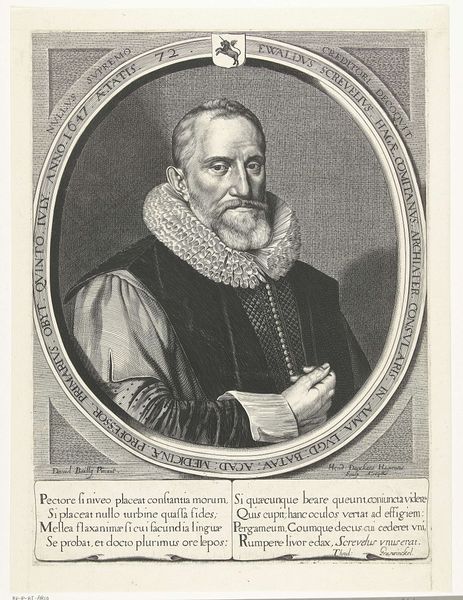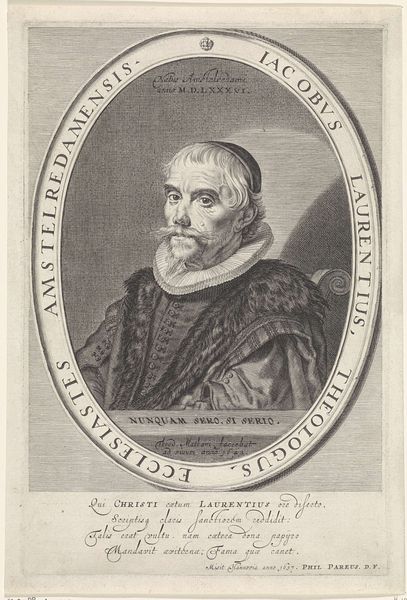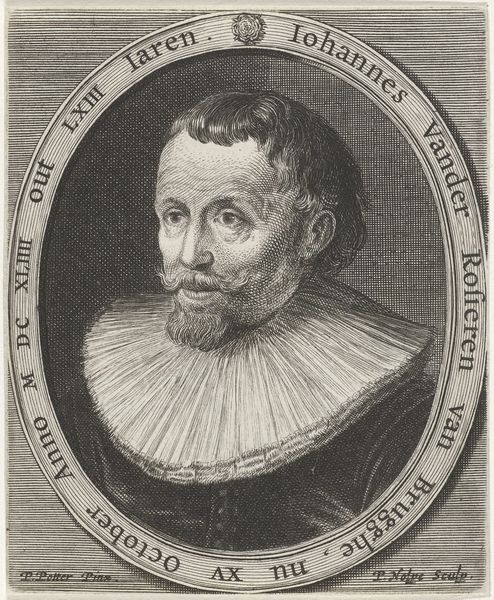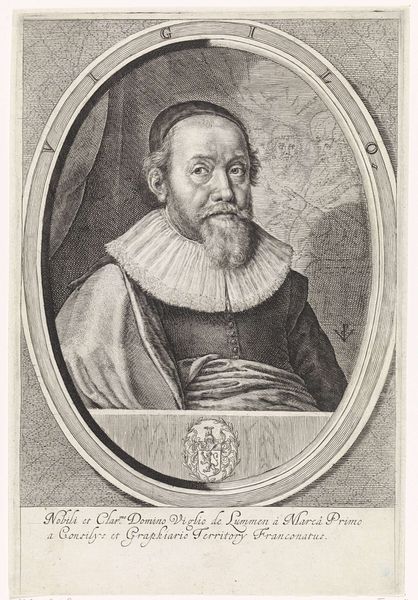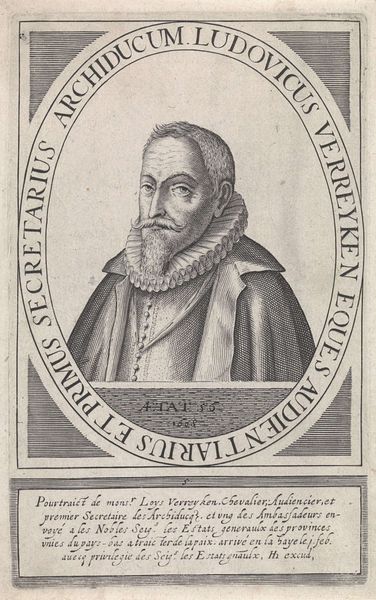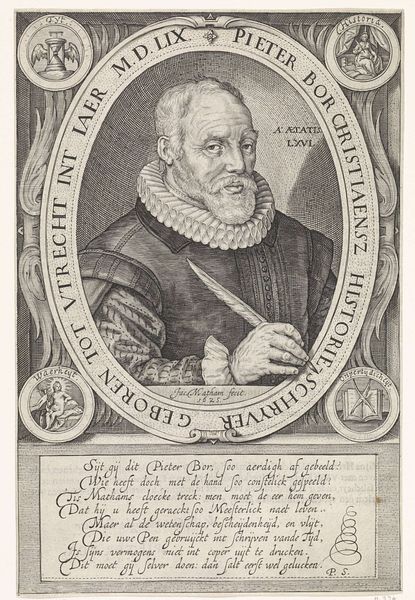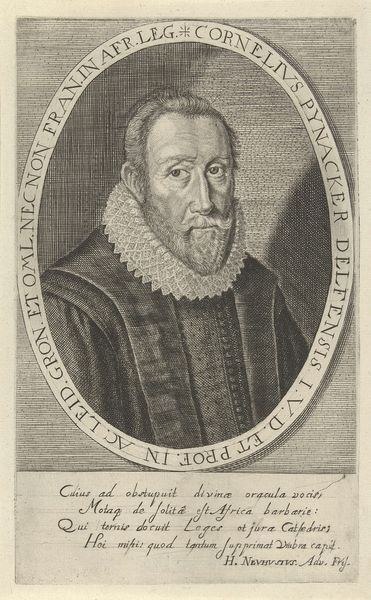
print, engraving
#
portrait
#
pencil drawn
#
facial expression drawing
#
baroque
# print
#
pencil sketch
#
portrait drawing
#
academic-art
#
engraving
#
realism
Dimensions: height 137 mm, width 103 mm
Copyright: Rijks Museum: Open Domain
Matthijs Pool made this print of Petrus Hogerbeets, a Dutch physician and poet, sometime between 1676 and 1740. The oval frame tells us much about the social status of the sitter. In 17th and 18th century Netherlands, the patronage system saw artists producing work for wealthy individuals or institutions. Engravings like these were often commissioned by or for the sitter as a way of publicly announcing the subject’s prominence and good taste. The inscription tells of Hogerbeets’s life and work, as well as implying moral qualities. The picture is a form of self-promotion, a declaration of social standing. To fully understand this piece, we might delve into the archives of Dutch literary societies or medical institutions. By studying the social context, we discover how art plays a crucial role in constructing and reinforcing power structures of its time. Ultimately, the meaning of this portrait is found not just in its aesthetic qualities, but in its complex web of social and institutional relations.
Comments
No comments
Be the first to comment and join the conversation on the ultimate creative platform.
